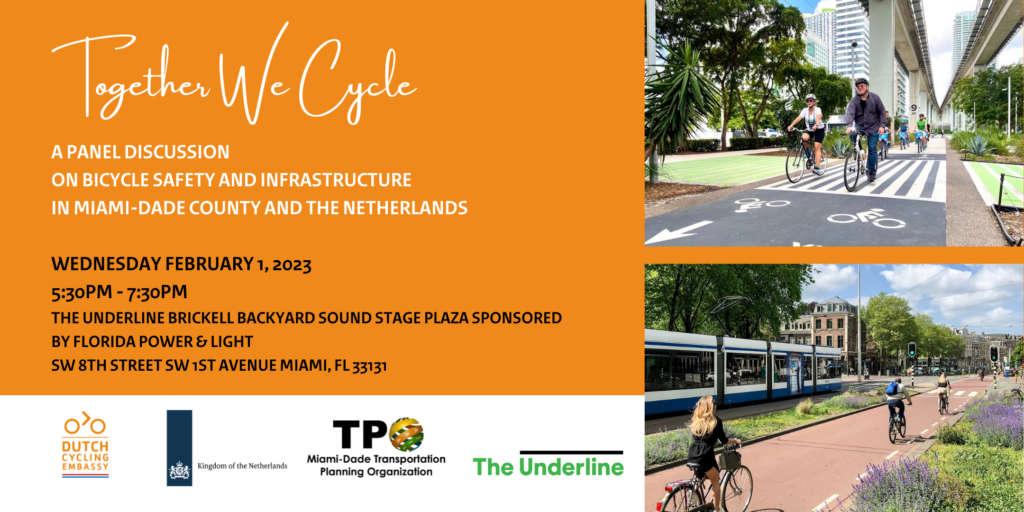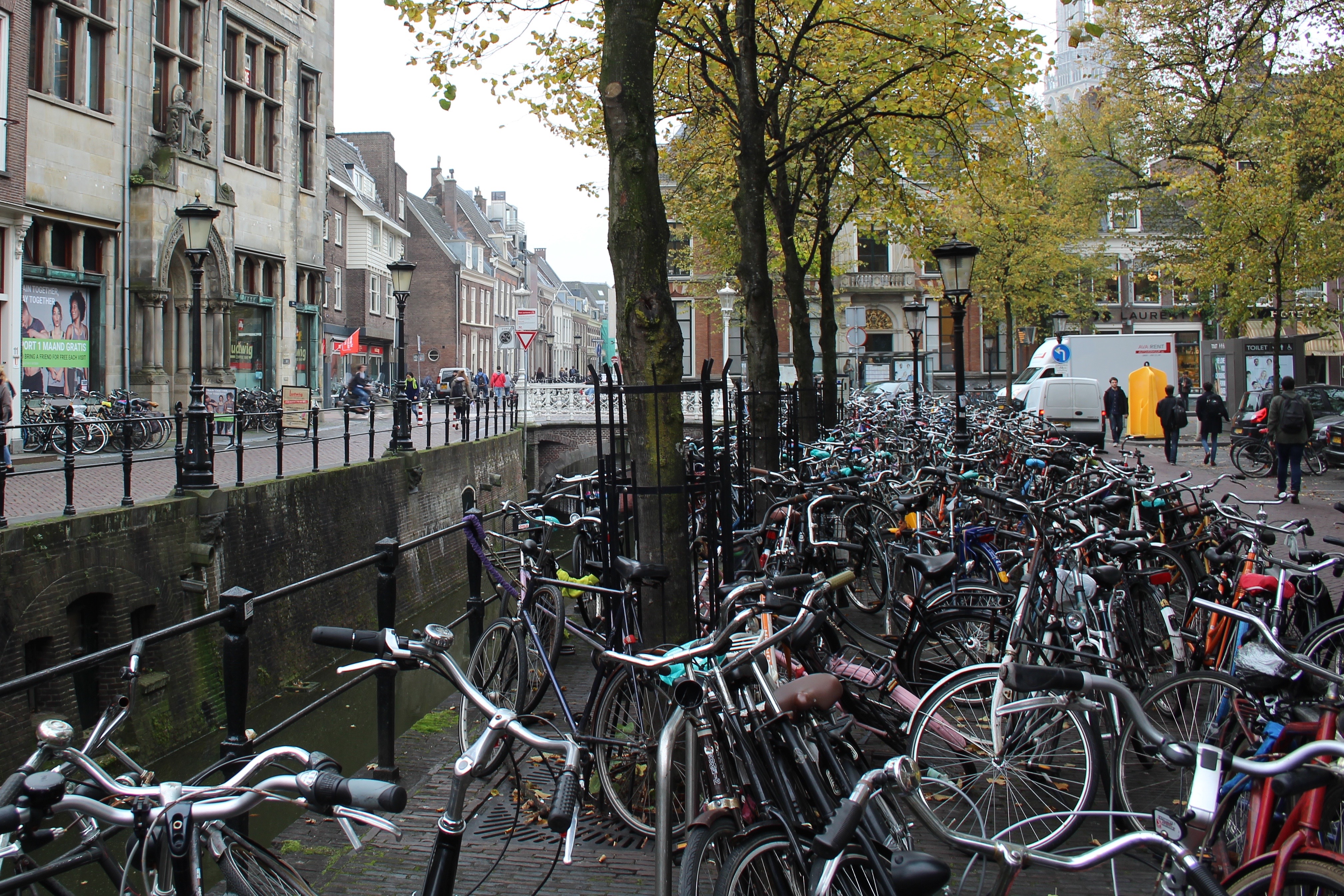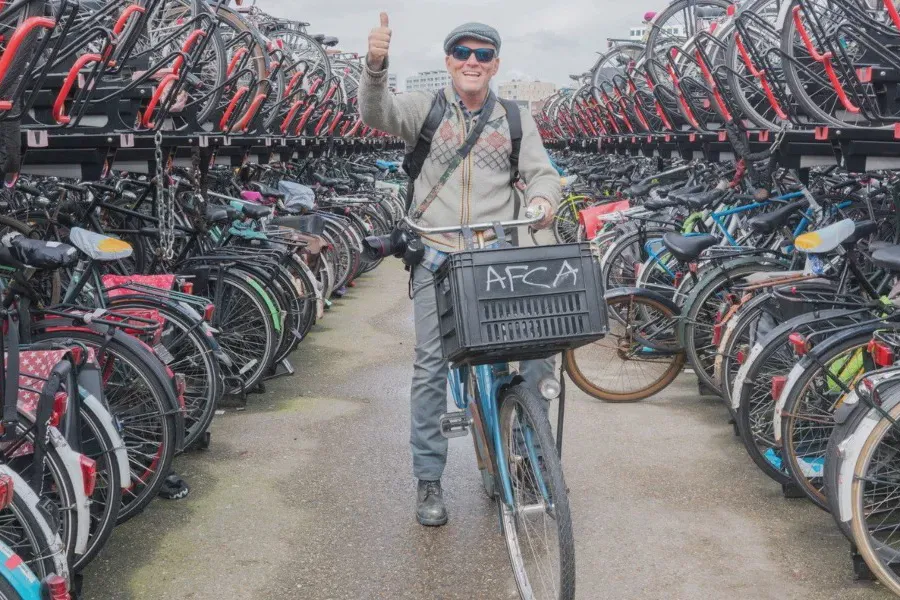Cycling in the Netherlands is a beloved tradition. The country is known for its bike-friendly culture.
But where are we today with cycling in the Netherlands? The Netherlands has long been a paradise for cyclists. With flat terrain and dedicated bike lanes, it’s a cyclist’s dream. Over the years, the country’s cycling infrastructure has grown. Now, almost everyone owns a bike.
In cities like Amsterdam and Utrecht, bikes outnumber cars. This shift is not just about convenience. It’s also about health and the environment. Cycling reduces pollution and traffic congestion. Plus, it promotes a healthier lifestyle. So, where does the Netherlands stand now? Let’s explore the current state and future of cycling in this bike-loving nation.

Credit: www.youtube.com
Cycling Culture
The Netherlands is famous for its vibrant cycling culture. This small European country has made cycling an essential part of daily life. The infrastructure supports cyclists with dedicated lanes, traffic lights, and parking areas. Let’s explore the historical background and daily commute that make the Dutch cycling culture so unique.
Historical Background
Cycling in the Netherlands has deep roots. The first bicycle paths appeared in the early 20th century. During the 1970s, the oil crisis and rising car accidents prompted a shift. The government invested in cycling infrastructure. This period saw the creation of many bike lanes and bike-friendly policies.
Today, cycling is not just a mode of transport. It’s a way of life. The Dutch have built a safe and efficient system for cyclists. It includes bike lanes, traffic signals, and parking areas. The historical commitment to cycling has shaped the current culture.
Daily Commute
In the Netherlands, cycling is a common way to commute. Many people ride bikes to work, school, and shops. The flat terrain and short distances make it easy. Plus, there are bike lanes everywhere.
The average Dutch person cycles about 2.9 km daily. This translates to around 1,000 km per year. That’s impressive! It’s clear why the Netherlands is a cycling paradise.
The infrastructure supports this lifestyle. For instance, there are secure bike parking areas at train stations. Many cities have bike-sharing programs. This encourages more people to choose cycling.
Moreover, Dutch children learn to ride bikes at a young age. Schools often include cycling lessons in their curriculum. This early start builds confidence and road safety skills.
Overall, cycling is an integral part of daily life in the Netherlands. It offers convenience, health benefits, and environmental advantages. The Dutch cycling culture is a model for other countries to follow.
Infrastructure
Cycling in the Netherlands is a dream. The country is famous for its cycling infrastructure. It makes biking safe and enjoyable. Let’s explore the key aspects.
Bicycle Lanes
The Netherlands has thousands of kilometers of bicycle lanes. These lanes are separated from motor traffic. This ensures safety. The lanes are often painted red. This makes them easily visible.
Many bicycle lanes are two-way. This allows cyclists to travel in both directions. In busy areas, you will find wider lanes. This prevents congestion and accidents. Signs and signals guide cyclists. This ensures smooth traffic flow.
Parking Facilities
Parking for bicycles is easy in the Netherlands. There are many parking facilities available. These range from simple racks to large bike garages. In cities, you will find bike racks on every corner. This makes it convenient to park.
For longer-term parking, there are bike garages. These are often found near train stations. Some garages are even underground. They offer protection from weather and theft. Parking facilities are well-lit and secure. This gives peace of mind to cyclists.
Government Policies
The Netherlands is famous for its cycling culture. A big part of this success is the government’s strong support. Policies help make cycling safe and popular. These policies focus on subsidies, safety regulations, and more.
Subsidies And Incentives
The Dutch government offers many subsidies and incentives for cyclists. These make biking an attractive option. Here are some key points:
- Tax breaks for buying a bike
- Financial help for electric bikes
- Subsidies for bike parking spaces
Local councils also invest in bike infrastructure. They build new bike lanes and parking facilities. This makes cycling easy and convenient.
Safety Regulations
Safety regulations are strict in the Netherlands. They aim to protect all road users. Here are some important rules:
- Helmets for kids under 12
- Mandatory bike lights at night
- Regular bike maintenance checks
The government also runs safety campaigns. These teach cyclists about road safety. Schools have cycling lessons for children too. This helps them learn the rules from a young age.
Overall, these policies make cycling safe and appealing. They encourage more people to choose bikes over cars.
Environmental Impact
Cycling in the Netherlands greatly reduces carbon emissions. The extensive bike paths make it easy for people to choose bikes over cars. This shift helps improve air quality and lowers traffic congestion.
Cycling in the Netherlands has a significant environmental impact. This country is a leader in promoting cycling. It sets an excellent example for other nations. The positive effects on the environment are clear. Let’s explore the key aspects.Reduction In Emissions
Cycling reduces harmful emissions. Cars emit carbon dioxide and other pollutants. Bicycles do not. More cyclists mean fewer cars on the road. This leads to cleaner air. It also lowers the carbon footprint. The Netherlands benefits from this.Promotion Of Green Spaces
Cycling promotes the creation of green spaces. Many bike paths in the Netherlands run through parks and nature reserves. These areas provide a habitat for wildlife. They also offer a pleasant experience for cyclists. Green spaces improve the quality of life. They make cities more livable. They also help reduce urban heat. This is vital for a healthy environment.Economic Benefits
Cycling in the Netherlands has significant economic benefits. It’s not just about getting from one place to another. The impact on the economy is profound, touching various sectors. Let’s dive into some key areas where cycling boosts the economy.
Tourism Boost
Cycling tourism is a major draw in the Netherlands. The country boasts over 35,000 kilometers of cycle paths. Tourists flock to experience these scenic routes.
Visitors spend money on accommodations, meals, and bike rentals. This influx supports local businesses. According to a study, cycling tourists spend about €335 million annually.
Here’s a quick look at how cycling tourism benefits the economy:
- Bike Rentals: Increased demand for rental services.
- Accommodations: More bookings in hotels and B&Bs.
- Local Shops: Higher sales in cafes and restaurants.
Healthcare Savings
Regular cycling improves health. It reduces the risk of chronic diseases. This leads to significant healthcare savings.
Studies show that cycling can reduce healthcare costs by €19 billion per year. Cyclists are healthier and require fewer medical services.
Consider these points:
- Lower Medical Bills: Fewer hospital visits and treatments.
- Reduced Sick Leave: Healthier workers take fewer sick days.
- Enhanced Well-being: Physical activity boosts mental health.
In summary, cycling in the Netherlands provides tremendous economic benefits. It boosts tourism and reduces healthcare costs significantly.

Credit: www.theunderline.org
Challenges
Cycling in the Netherlands is a popular and eco-friendly mode of transport. Despite its many benefits, cyclists face several challenges. These challenges can impact the overall cycling experience.
Weather Conditions
The Netherlands is known for its unpredictable weather. Cyclists often deal with rain, wind, and cold temperatures. Rain can make roads slippery and reduce visibility. Strong winds can make cycling harder, especially in open areas. During winter, cold temperatures can be uncomfortable and icy roads can be dangerous.
Traffic Congestion
Even though the Netherlands has many cycling paths, traffic congestion is still a problem. Busy intersections can be risky for cyclists. Narrow paths become crowded during peak hours. This congestion can lead to delays and accidents. Cyclists need to be alert and careful in these situations.
Technological Innovations
Technological innovations are transforming cycling in the Netherlands. These advancements make cycling safer, more efficient, and accessible. The integration of technology is reshaping the cycling experience. Below, we explore some key innovations.
Electric Bikes
Electric bikes are gaining popularity in the Netherlands. They offer a boost for longer rides. Commuters use them to travel greater distances without fatigue. The electric assist makes cycling easier for all ages. These bikes are perfect for hilly areas or windy days. E-bike rentals are also available in many cities. This makes them accessible for tourists.
Smart Traffic Systems
Smart traffic systems improve safety and efficiency for cyclists. These systems use sensors to monitor traffic flow. They adjust traffic lights to prioritize cyclists. This reduces waiting times at intersections. Some cities have special bike-only traffic lights. These lights are part of a larger effort to promote cycling.
Smart systems also provide real-time data to cyclists. This data includes traffic conditions and the best routes. Cyclists can plan their journeys more effectively. Safety features include warning signals for approaching vehicles. This helps prevent accidents.
Future Prospects
Cycling in the Netherlands has always been popular. The future looks even brighter. Let’s explore what’s next for cycling in this bike-friendly country.
Expansion Plans
The Netherlands plans to expand cycling infrastructure. New bike lanes will be added. Existing paths will be improved. More bike parking spaces will be created. This will ease congestion in cities. It will also make cycling safer and more enjoyable.
The government is investing in cycling. They want to reduce car usage. This will help lower pollution levels. It will also promote a healthier lifestyle. The aim is to make cycling the primary mode of transport.
Community Engagement
Community involvement is crucial for successful cycling initiatives. Local councils organize events to promote cycling. These events raise awareness about the benefits of cycling. They also encourage people to use bikes more often.
Schools are also getting involved. They teach children about safe cycling. This early education fosters a lifelong habit of biking. Local businesses support cycling too. Many offer incentives for employees who bike to work.
Community engagement helps create a strong cycling culture. It ensures that everyone benefits from better cycling infrastructure. The future of cycling in the Netherlands looks promising with these efforts.

Credit: blogs.valpo.edu
Frequently Asked Questions
Why Is Cycling Popular In The Netherlands?
Cycling is popular in the Netherlands due to its flat terrain and extensive bike paths. The culture strongly supports cycling. Infrastructure is also highly developed for cyclists.
What Are The Best Cities For Cycling In The Netherlands?
Amsterdam, Utrecht, and Groningen are top cities for cycling. They have well-maintained bike lanes and cycling-friendly policies. Public transportation also accommodates bikes.
How Safe Is Cycling In The Netherlands?
Cycling in the Netherlands is very safe. Dedicated bike lanes and strict traffic rules ensure safety. Cyclists are also highly respected by drivers.
Do I Need A Bike Helmet In The Netherlands?
Wearing a bike helmet in the Netherlands is not mandatory. However, it’s recommended for safety. Most locals prefer not to wear helmets.
Conclusion
Cycling in the Netherlands offers a unique and enjoyable experience. The country provides safe and scenic routes for all. Exploring on two wheels gives a local’s view of Dutch culture. The infrastructure is designed with cyclists in mind, making it easy and fun.
Whether you are a beginner or experienced rider, there is something for everyone. So, grab a bike and start your journey today. Enjoy the fresh air, beautiful landscapes, and friendly people. Happy cycling!

